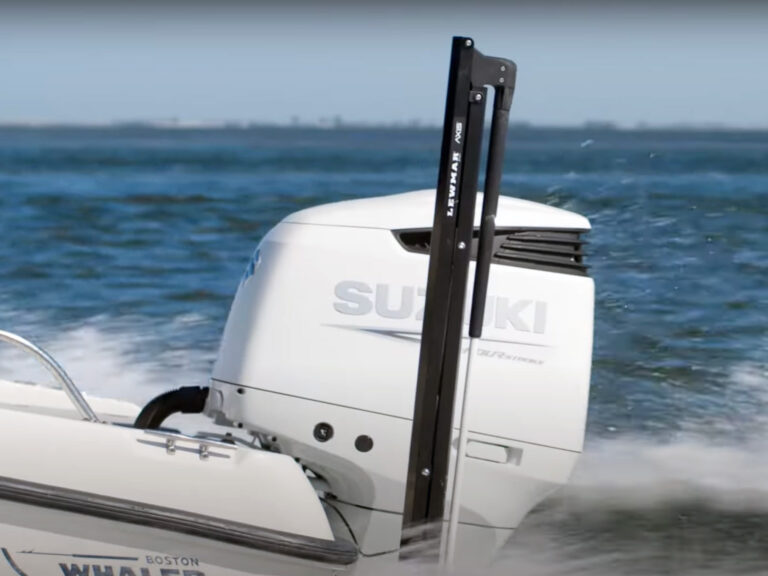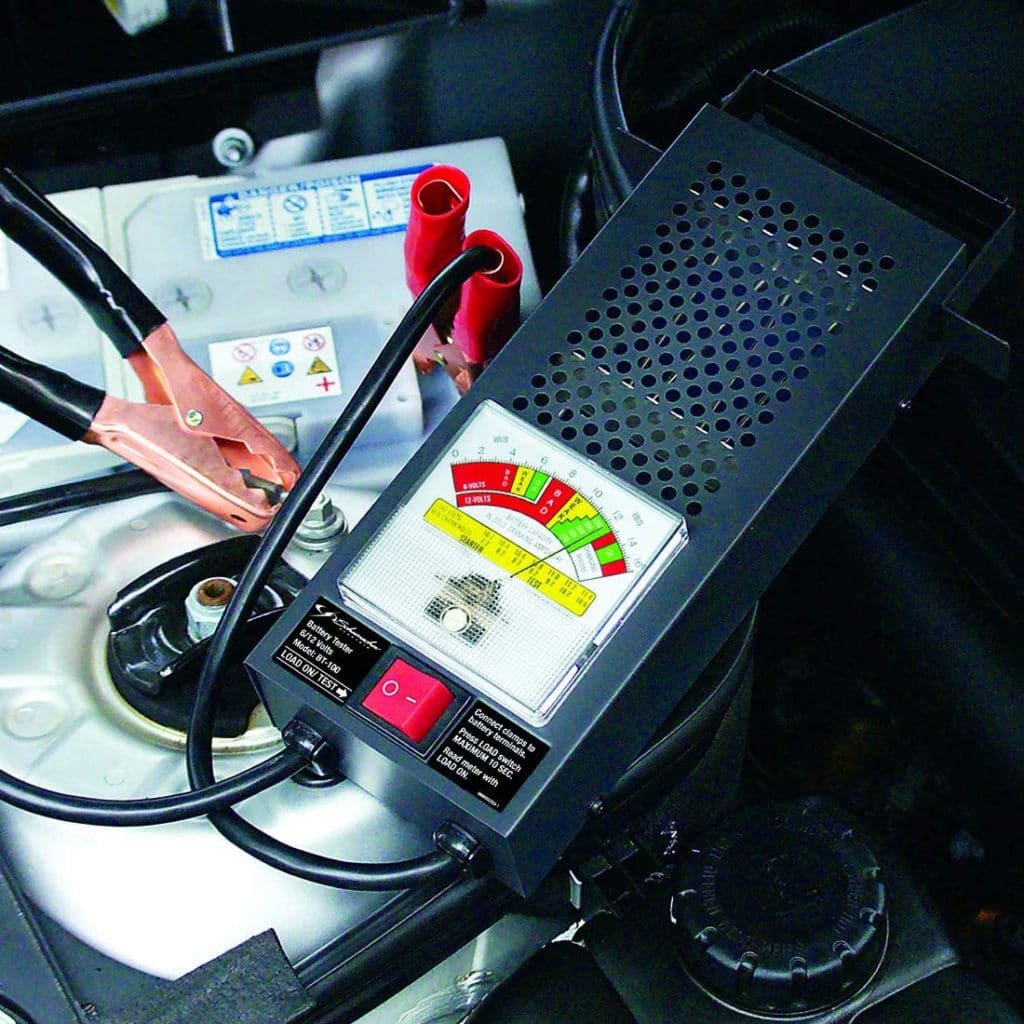
Saltwater boating anglers have a positive-negative relationship with marine batteries from brands such as Deka, Die Hard, Duracell, Dura Last, Discover, Interstate, Odyssey, Optima and West Marine. We’re positive when a boat battery proves fresh, fully charged, and pumps out plenty of DC electrical juice. Our perspective turns negative when a marine battery grows tired and low on the electrical power we so desperately need to start engines, spin pumps, run marine electronics, illuminate onboard lights, propel trolling motors and more.
To continue the current analogy, you can help keep things on a positive note by selecting the best marine battery for the job, maintaining it and monitoring battery health. To help readers make the right choices, we queried Matthew Campbell, director of marketing at Solv4Ex, parent company of Discover Battery, which offers a full spectrum of marine batteries, including Mixtech flooded cell and Dry Cell AGM lead-acid batteries, as well as Lithium Blue LiFePO4 batteries.
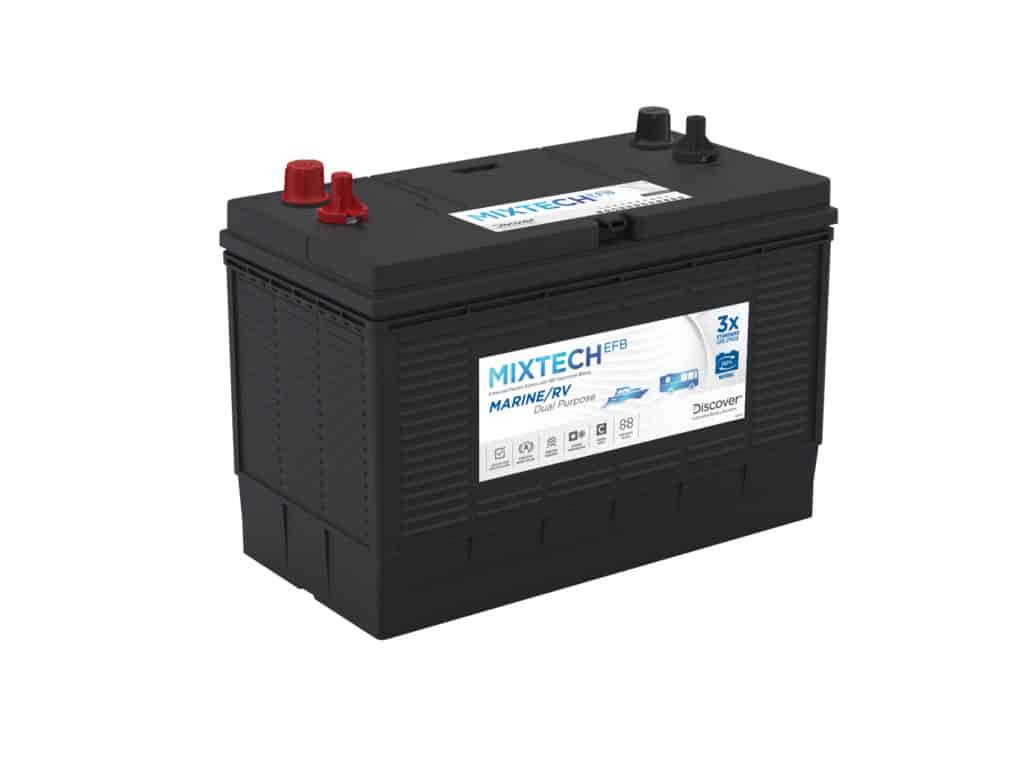
Marine Batteries Only
Some boaters might think that a marine battery is basically the same as one used in an automobile with a different label, but that’s far from the truth, Campbell says. “An automotive battery is not built to withstand the rigors of being at sea,” he explains. “Vibration and jolts from waves can damage and separate the internal plates, significantly reducing the battery life and capacity.”
Marine batteries tend to cost more because they feature more robust construction to cope with pounding in heavy seas while maintaining structural integrity. “Discover marine and Lithium Blue batteries, for example, all have plates that are epoxy-bonded on both the top and bottom or, in the case of Lithium Blue, mechanically bonded to prevent the plates and cells from separating in rough sea conditions,” Campbell points out.
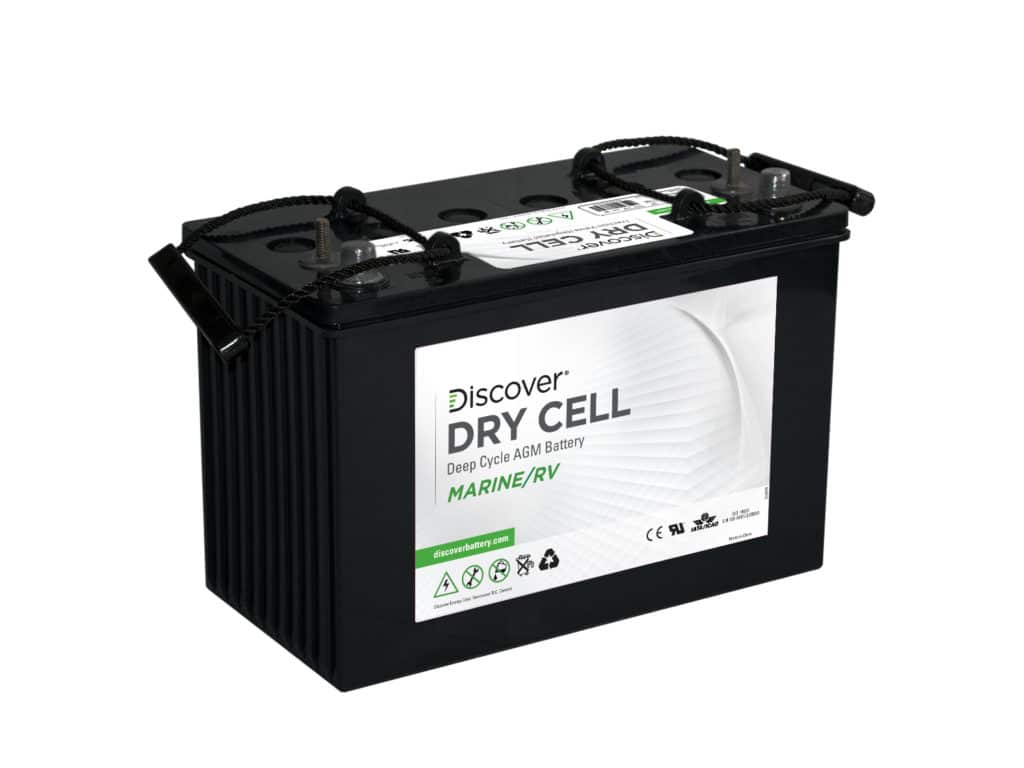
Purpose-Built Batteries
Marine batteries come in three basic types: starting (aka cranking), deep-cycle and dual-purpose. Which battery type should you select for your boat?
The distinctions boil down to the purpose of the marine battery. For example, as the name implies, a marine starting battery is purpose built to fire up the boat engine(s). It’s good for short bursts of high energy, and is charged directly by the alternator when the engine is running.
A marine deep-cycle battery, on the other hand, is designed for a “house” circuit that’s separate from the starting battery, and is engineered to power equipment with low to moderate electrical DC-current needs over extended periods of time. A deep-cycle house battery bank powers elements such as marine electronics, livewell pumps, refrigerators, audio systems, and air-conditioning. Deep-cycle lead-acid batteries can be deeply discharged (drained by much as 50 percent) and brought back to full charge (aka “cycled”) up to 400 times.
Dual-purpose marine batteries represent a compromise between starting and deep-cycle applications. “Dual-purpose batteries are well suited for smaller boats without enough room for separate starting and house battery banks,” Campbell explains. A dual-purpose battery can serve both cranking and house function, but is essentially a compromise between the two.
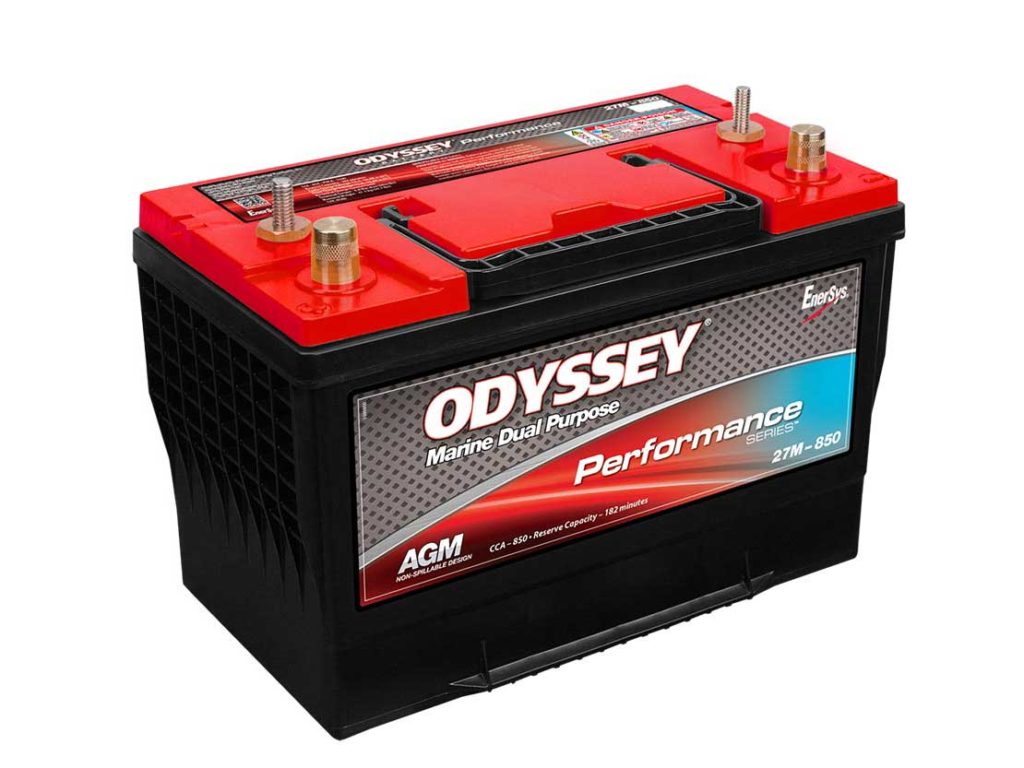
Flooded-Cell vs. AGM
Conventional lead-acid marine batteries come in two basic choices: flooded-cell or AGM (absorbed glass mat). A flooded-cell battery such as the sealed Discover Mixtech has the advantage of lower cost compared to AGM, and has patented technology to combat acid stratification, the enemy of every flooded battery. These batteries must be mounted upright (terminals on top) to operate properly. Also, old-school batteries that are not sealed can spill corrosive acid if the battery tips over.
An AGM, on the other hand, contains no liquid acid and can be mounted on its side if necessary in order to fit within a tight space or provide easier access to the terminals. “AGMs such as the Discover Dry Cell marine batteries also provide longer battery life than comparable flooded-cell batteries,” Campbell says. “This is largely because AGMs are not as severely affected by ‘acid stratification’ as are most flooded-cell batteries.”
Well-maintained AGM batteries can last as long nine to 10 years in marine applications, though each case is different. Well-maintained flooded-cell batteries, on the other hand, generally possess a useful life of three to five years aboard a boat, but again, this can vary depending on the amount of use and level of maintenance.
While AGMs win every time on longevity, they cost anywhere from 40 to 50 percent more than a comparable flooded-cell battery. As a point of comparison, a West Marine 27-series AGM dual-purpose marine battery retails for $310, while a West Marine 27-series flooded-cell dual-purpose marine battery retails for $180.
Anatomy of a marine battery. Courtesy Discover Battery
Lithium Revolution
Today, the newest and best choice for a house battery-bank is lithium technology such as that found in the Discover Lithium Blue series, says Campbell. Lithium batteries, no matter what the brand, require a new way of thinking about marine DC systems, including the means by which these batteries are charged. They require specialized chargers and must be completely isolated from the engine starting circuit. Though there are some lithium automotive starting batteries, most marine lithium batteries, including the Lithium Blue, cannot serve as starting batteries.
As deep-cycle house battery-banks, however, lithium technology offers 10 times or more battery life than any comparable lead-acid system. “Our Lithium Blue battery provides 4,000 cycles versus 400 cycles for an AGM lead-acid battery,” Campbell says.
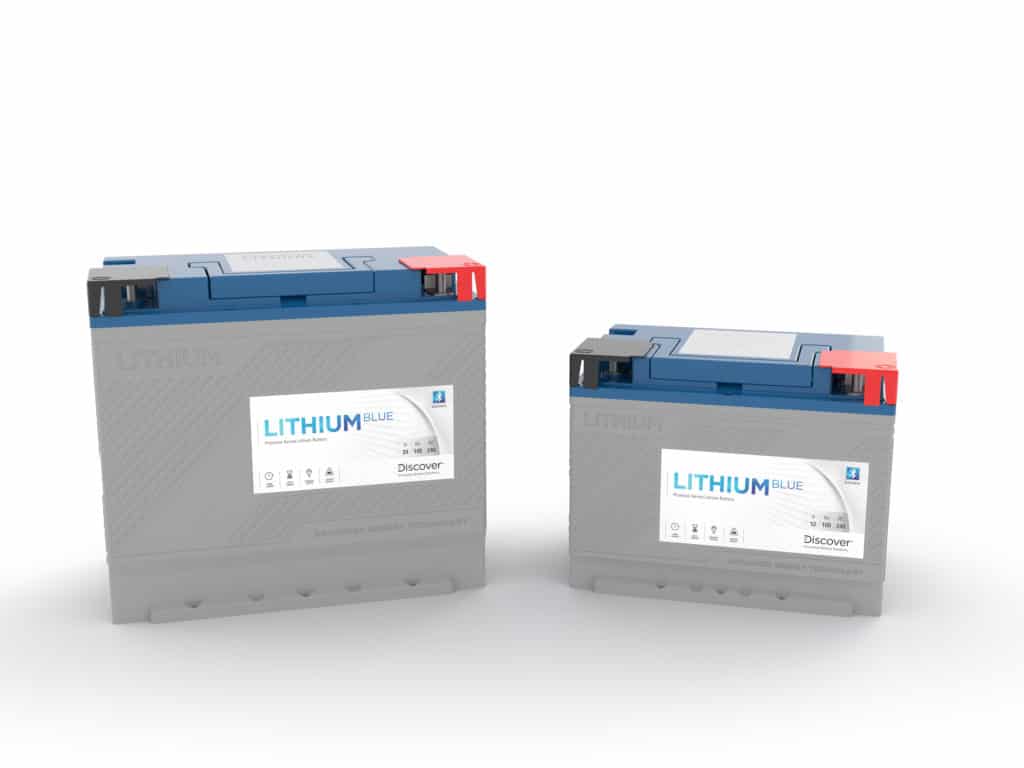
Lithium batteries also are far more expensive than lead-acid batteries. For example, a Lithium Blue 12-volt DC 200 amp-hour battery retails for about $1,200. “While the purchase price is hard to overcome, with the greater longevity of lithium batteries, they can pencil out to be better buys in the long run than less-expensive, but shorter-lived lead-acid batteries,” Campbell points out.
Lithium batteries are also much lighter than other types of batteries. For example, a Discover Dry Cell DCM27 AGM deep-cycle battery that offers 105 amp-hours (AH) weighs 71.5 pounds, while a Discover Lithium Blue with DLB-G24 12-volt deep-cycle battery that provides 100 AH weighs just 25.3 pounds. Concerns about the flammability of lithium batteries have largely dissipated with the advent of safe, reliable lithium-iron, colbalt-free technology.
Given the relatively new technology and specialized charging requirements, boaters should seriously consider consulting a qualified installer when switching a house battery-bank to lithium technology.
To learn more about lithium technology, take a look at this video on the Lithium Blue batteries. Courtesy Discover Battery
Battery Size
Marine 12-volt battery sizes vary widely from big, bulky 8D-series batteries for diesel-powered sportfishers to relatively small 24-series batteries for skiffs with 50 hp outboards. What size is best for your boat?
“The best bet is to replace your boat battery with the same size that is already in the boat,” Campbell says. “If that’s not possible, look for the battery specifications in the owner’s manuals for your marine power and boat.”
If in doubt, the bigger the battery, the more cold cranking amps (CCA), reserve capacity (RC) and AH it will provide. So bigger is better, but with a caveat. “Size hinges largely on the available onboard space for batteries, and so this may well dictate the size” Campbell advises. “Weight is also a consideration with a lead-acid battery.” Smaller boats might not be well suited to big, heavy batteries.
If in doubt, consult your boat dealer or service shop about the best battery sizes for your boat and style of fishing.
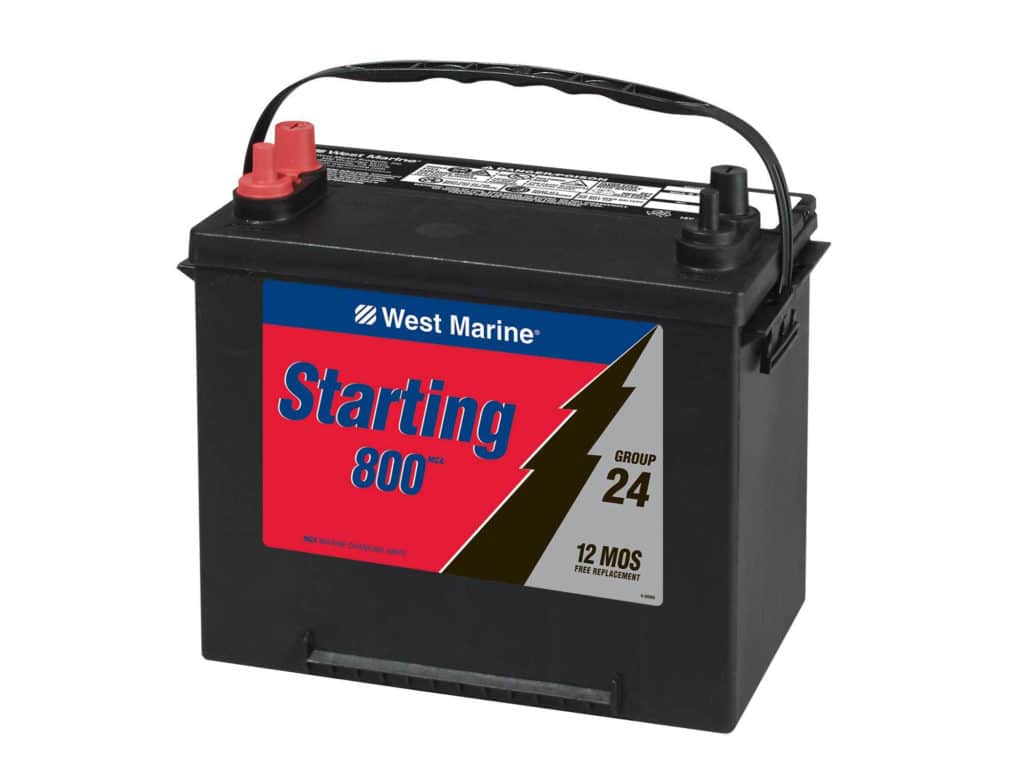
Number of Batteries
When it comes to the number of onboard marine batteries, much depends on the number of engines and the power demands of onboard equipment. As with determining the size of batteries, a good rule of thumb is to stay with the same number of batteries as were in the boat originally. However, as you add equipment such as an audio system, windlass or electric trolling motor, you might need to change the number and configuration of marine batteries to meet new power demands.
Read Next: Battery Selection and Charging for Fishing Boats
Saltwater trolling motors, for example, can often require a dedicated bank of two or three deep-cycle batteries wired in series to create a 24- or 36-volt system, respectively. Such systems can be complicated to configure, and so it’s a good idea to consult qualified boat dealers or marine technicians to handle these installations.
Time for Replacement
How do you know when it’s time to replace batteries? “Most boaters know intuitively when a battery bank is running low,” Campbell says. “For instance, onboard equipment such as a trolling motor might not run as long and strong as it used to.”
You can also test a battery with a multi-meter or load tester, but if you don’t feel confident with such test equipment, you can take your batteries to an auto parts store or boat dealer to have them load tested. “If in doubt, talk to a battery professional about whether your batteries need to be replaced or not,” Campbell advises.
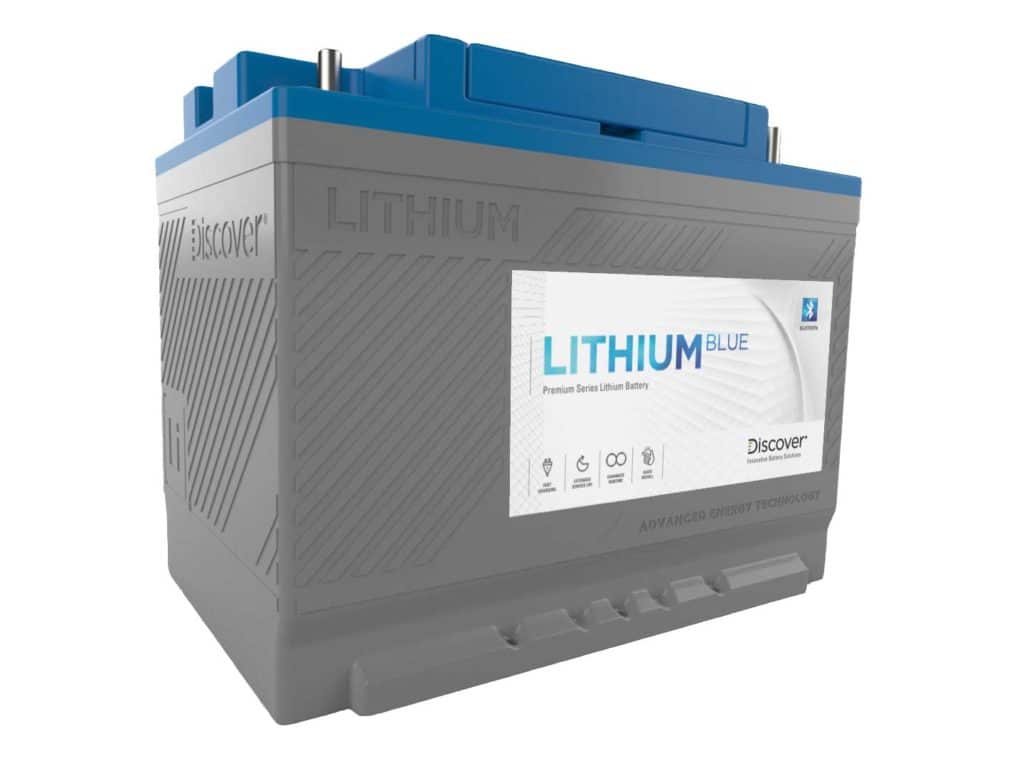
New Technologies
Though lithium technology represents a mighty advancement in marine DC power, it might be just be one step in the accelerating evolution of batteries. Solid-state batteries, for example, represent a burgeoning technology that holds promise for the boaters of tomorrow, but no one can predict if or when this might become available to boating anglers.
“There are new battery technologies being developed regularly,” Campbell points out, but observes that many never make it to commercialization for a variety of reasons. “In some cases, the newer technology is simply too expensive or not able to be made into smaller battery configurations to fit in a boat,”
More Information
To learn more in-depth information about batteries and which ones are right for your boat, Campbell suggests visiting discoverbattery.com and downloading the Battery 101 PDF document that contains a wealth of information and frequently ask questions about selecting and configuring battery systems of all types.
For additional information, visit westmarine.com for advice on battery installation.








